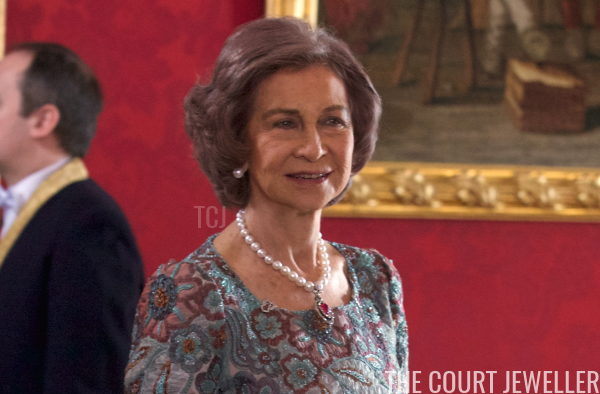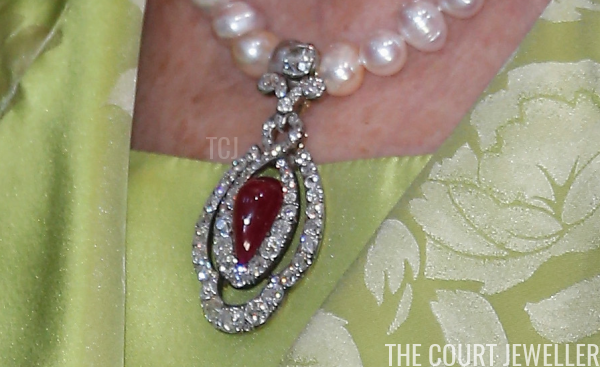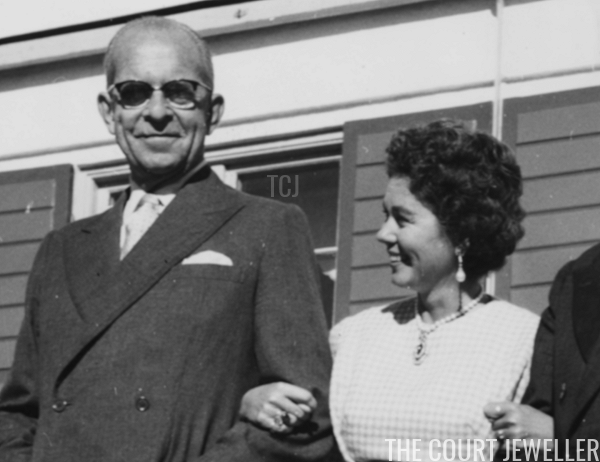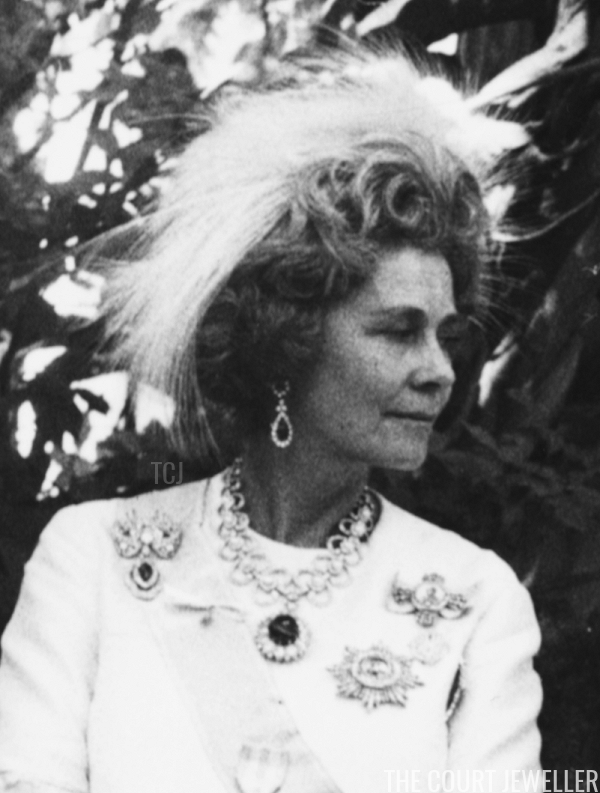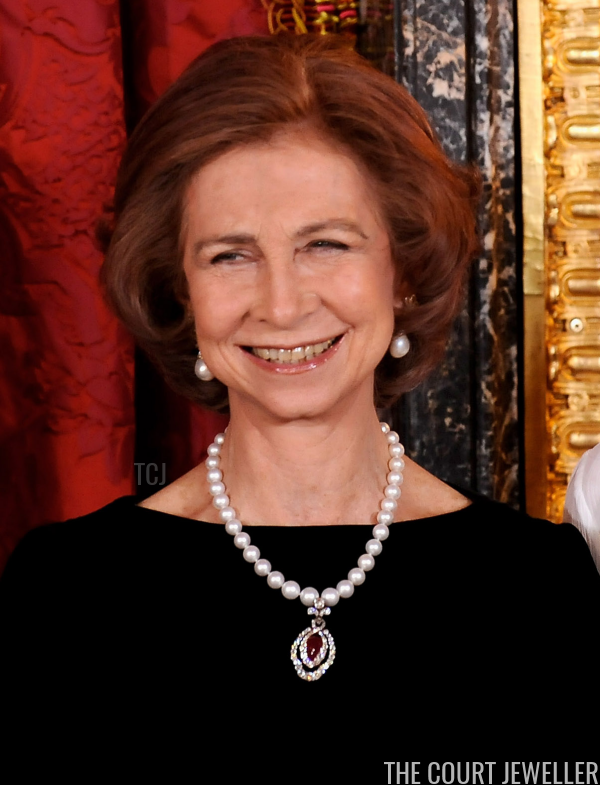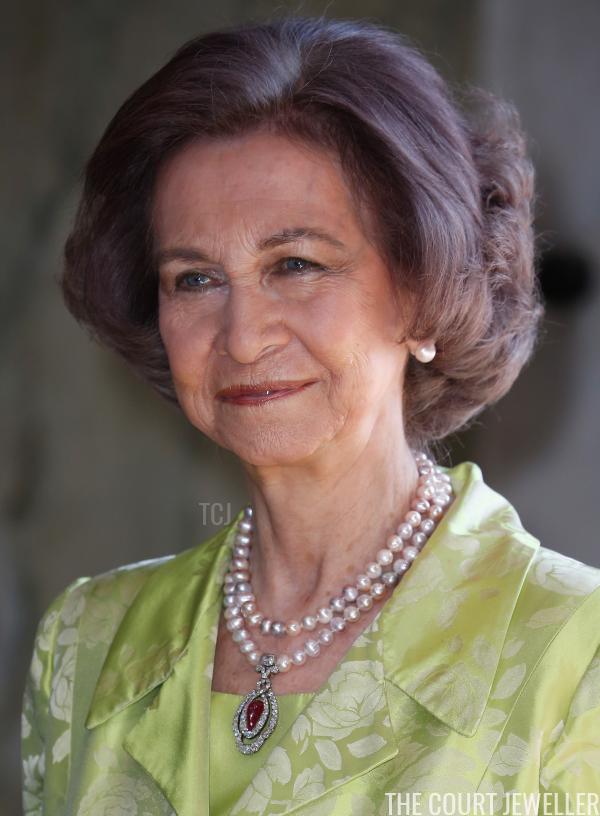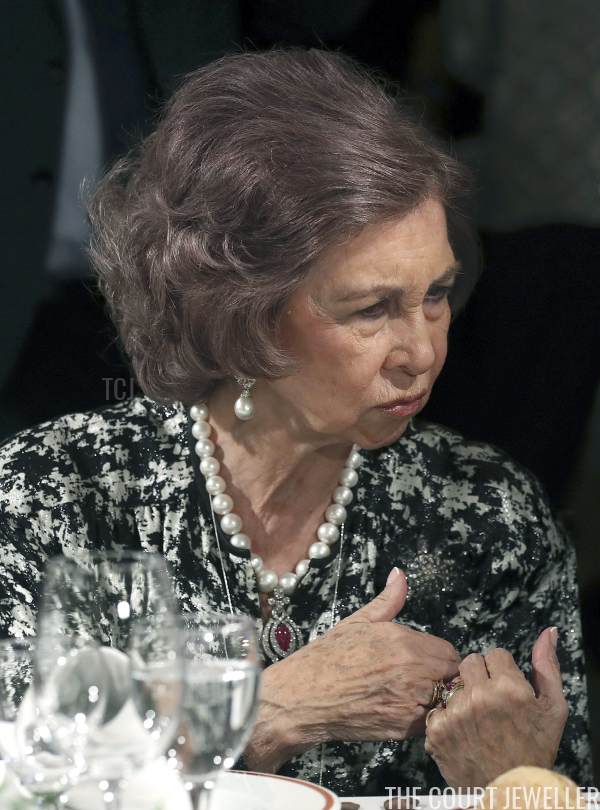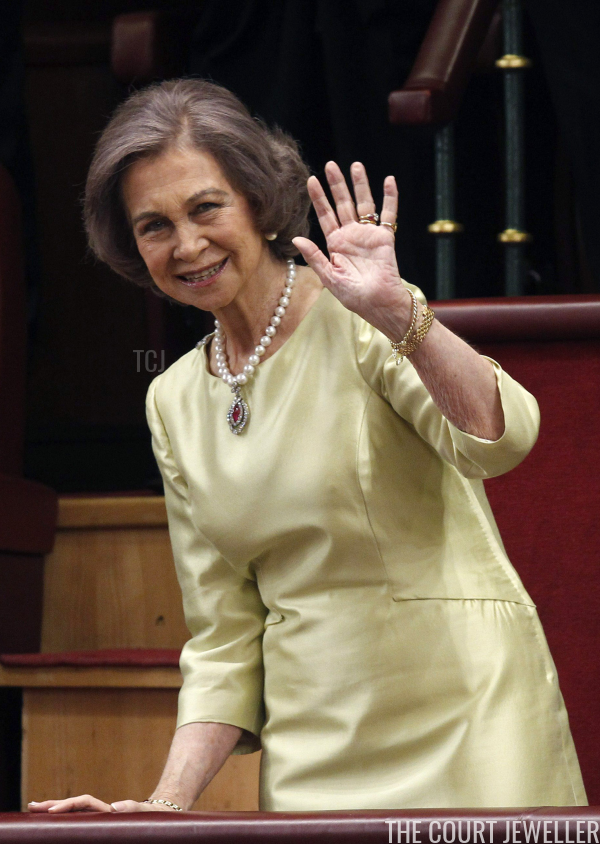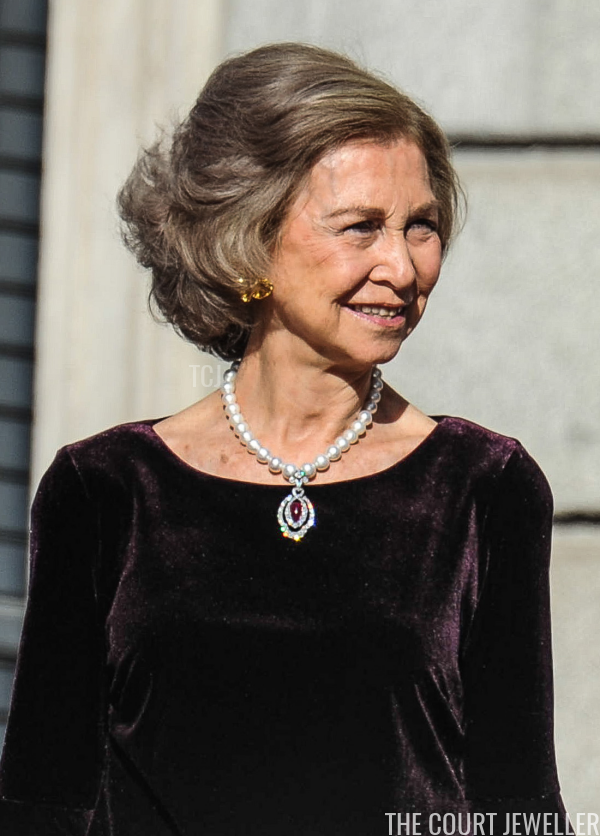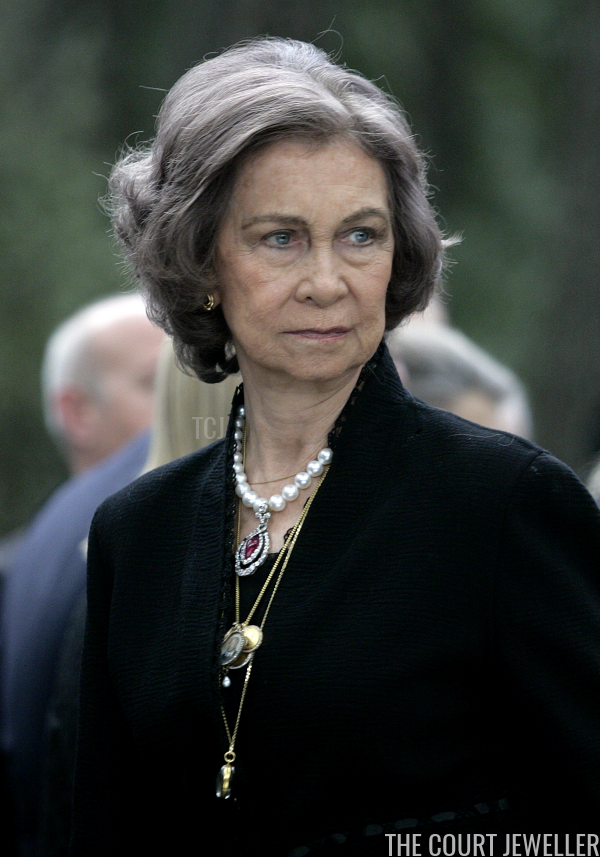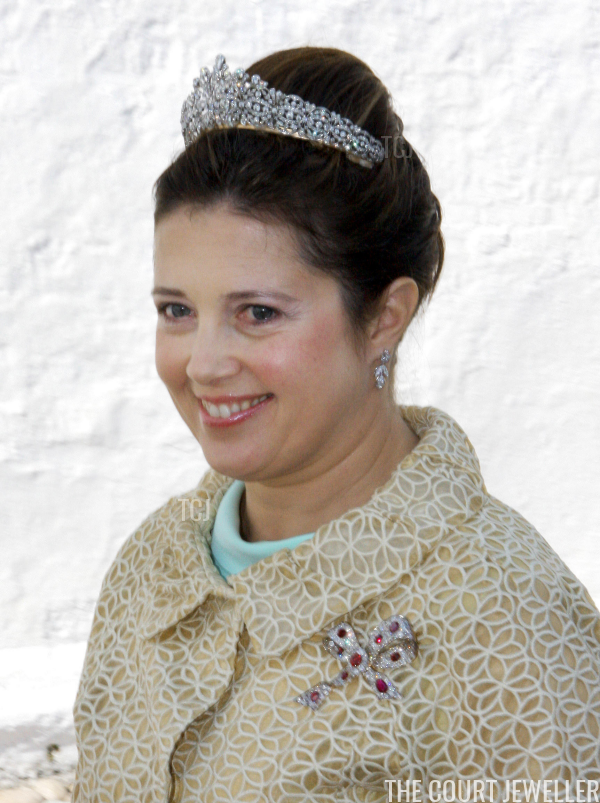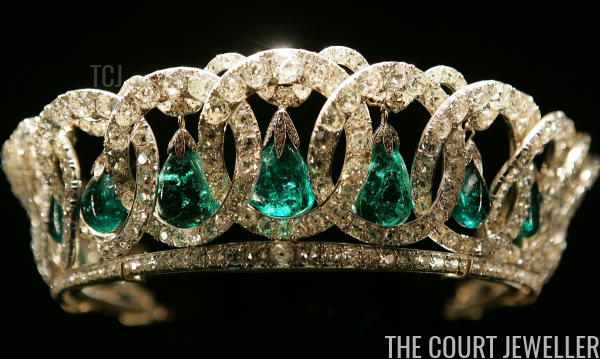 |
| Peter Macdiarmid/Getty Images |
Get ready, magpies: we’ve got a heck of a tiara story for your Saturday enjoyment! The Vladimir Tiara survived revolution and upheaval to become one of the most iconic diadems in the world.
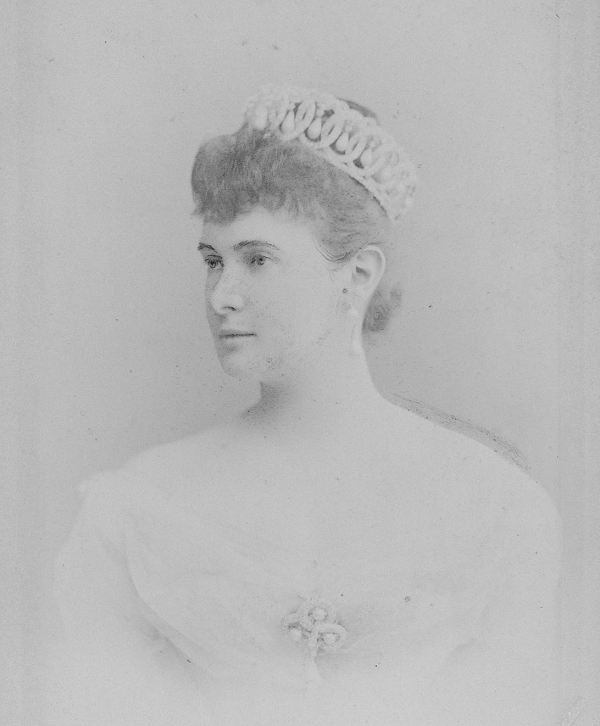 |
| Wikimedia Commons |
The tiara’s original owner was one of the most important figures of the Romanov imperial court at the turn of the twentieth century. Duchess Marie of Mecklenburg-Schwerin, a German princess, became part of the Romanov family when she married Grand Duke Vladimir Alexandrovich of Russia, a son of Emperor Alexander II, in 1874. Marie also had Romanov heritage of her own: she was the great-granddaughter of Grand Duchess Elena Pavlovna of Russia. To honor her Russian great-grandmother, Marie adopted the name “Maria Pavlovna” after her wedding in St. Petersburg. Her family called her “Miechen.” To the larger world, she became known as “Grand Duchess Vladimir.”
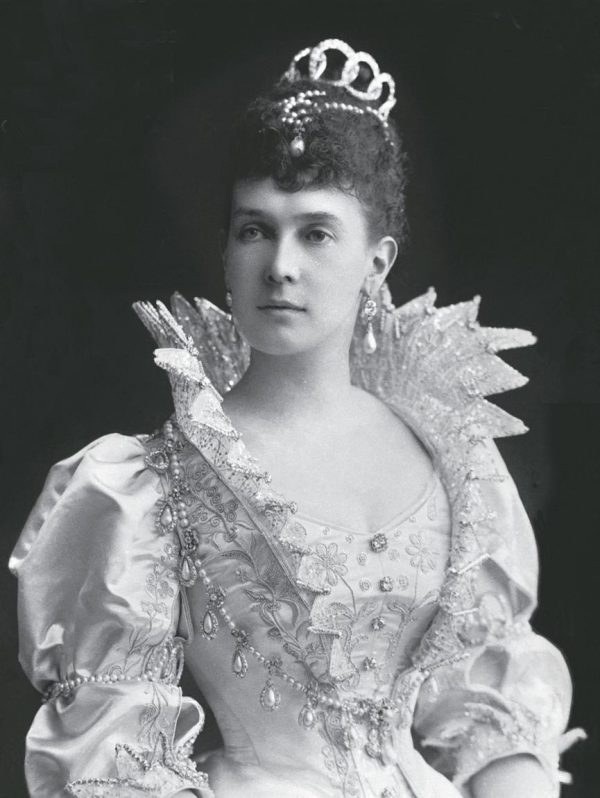 |
| Wikimedia Commons |
Around the time of her marriage, the Russian imperial court jeweler, Bolin, made an elaborate new diamond and pearl tiara for Maria Pavlovna. The piece was delightfully flexible; the pearls could be removed, as well as part of the diamond-encrusted structure, allowing it to be worn in a more closed form. (The tiara is generally described as “widowed” when worn without its pendant stones.) For one costume ball, she wore the tiara without its pendants as a smaller closed coronet, as you’ll note in the portrait above.
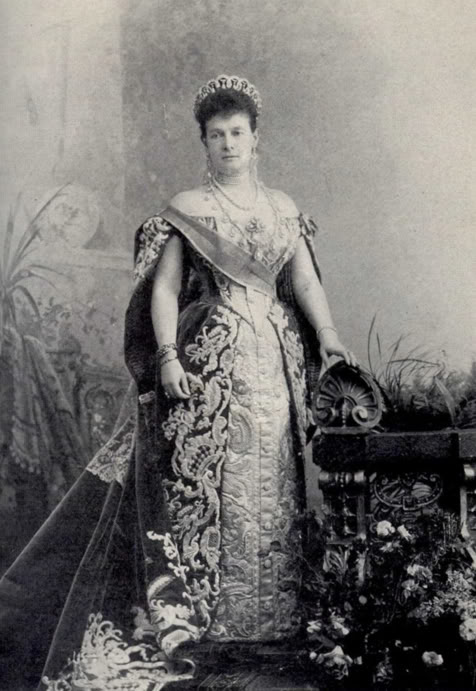 |
| Wikimedia Commons |
The Vladimirs quickly became a central part of the Russian imperial world, even establishing a sort of rival court of their own. There were plenty of opportunities for Maria Pavlovna to wear her pearl tiara, including occasions that required the elaborate traditional court dress favored by the Romanovs. But Grand Duke Vladimir died in 1909, and in 1917, the Russian Revolution bore down upon the imperial family. Following the abdication of the emperor, Maria Pavlovna was advised to leave Saint Petersburg for good. She fled the palatial Vladimir Palace for a villa in Kislovodsk, but her jewels, including the tiara, remained in a hidden safe in her bedroom at the palace. When the government became suspicious of her correspondence, she was placed under house arrest, and her financial situation became increasingly precarious.
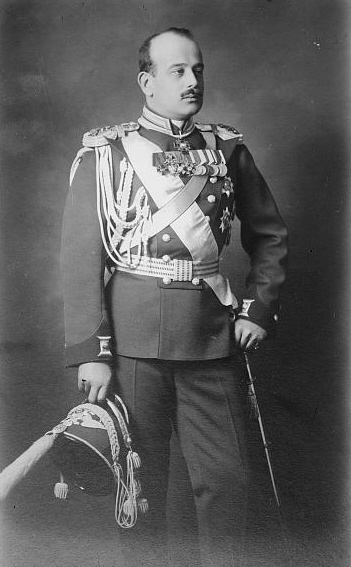 |
| Wikimedia Commons |
That summer, Maria Pavlovna’s son, Grand Duke Boris (pictured above), and a friend, Bertie Stopford, hatched a dangerous plan to retrieve her jewels. Stopford was an aristocratic British art dealer who also had diplomatic ties. He and Boris disguised themselves as workmen, and with the help of a palace caretaker, they snuck into the Vladimir Palace and smuggled out the contents of Miechen’s secret safe. The Vladimir Tiara and her other jewels were placed in a pair of Gladstone bags, and Stopford managed to sneak them out of Russia. He took the jewels to London, where they were placed in a safety deposit box.
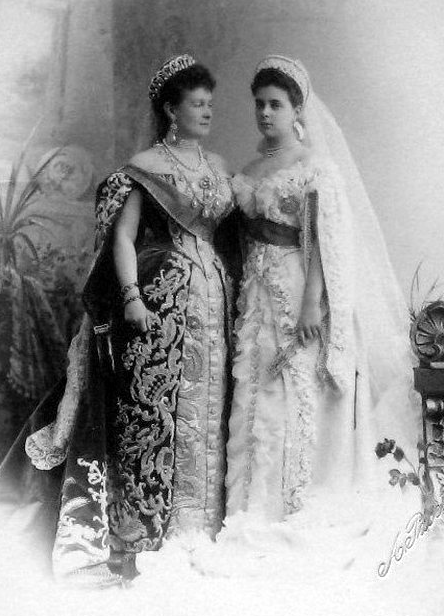 |
| Wikimedia Commons |
In January 1920, Garrard created an inventory of Maria Pavlovna’s jewels. The list shows that the Vladimir Tiara was damaged during its journey from Russia to England; some of the pearls and diamonds were missing from the piece. That February, Maria Pavlovna became the last Romanov grand duchess to escape from Russia. She boarded an Italian steamer that took her to Venice, and from there, she made her way to France. The journey took a serious toll on her health, and she died only a few months later. The Vladimir Tiara was inherited by her only daughter, Grand Duchess Elena Vladimirovna, who had become Princess Nicholas of Greece and Denmark when she married into the Greek royal family in 1902.
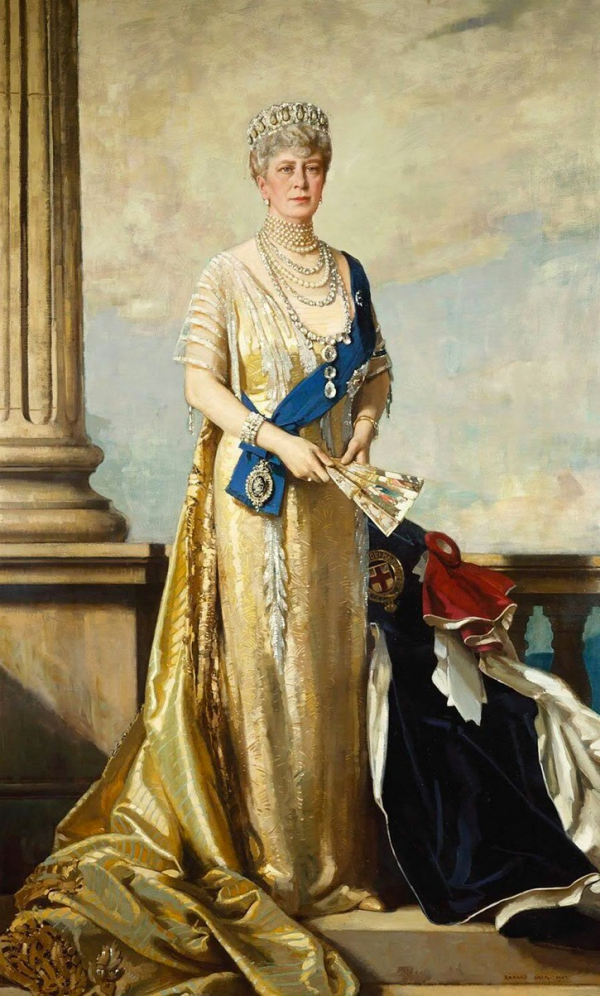 |
| Grand Ladies Site |
In 1921, Elena decided to sell some of her mother’s jewels. She quickly found an interested royal buyer: Queen Mary of the United Kingdom. Mary purchased the damaged Vladimir Tiara and quickly ordered Garrard to make much-needed repairs to the diadem.
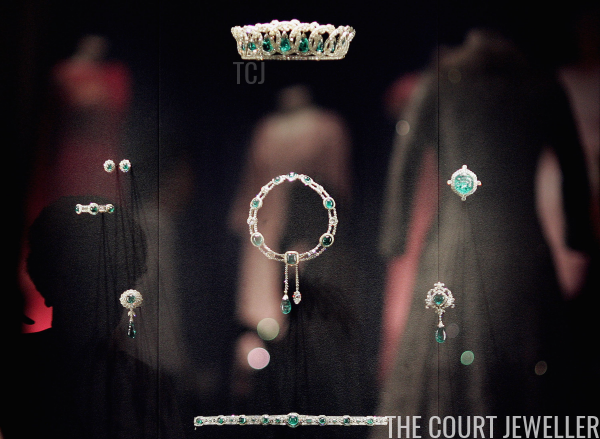 |
| Peter Macdiarmid/Getty Images |
Three years later, she commissioned Garrard to work on the piece again. Mary’s collection included the Cambridge emeralds, a cache of gems that had belonged to her mother’s family. She had incorporated many of the stones into the Delhi Durbar Parure, and in 1924, she had the Vladimir Tiara adapted so that it could be worn in a third setting, with a series of fifteen cabochon drops from the Cambridge emerald collection. From then on, the emerald version of the tiara was often worn with pieces from the Delhi Durbar suite.
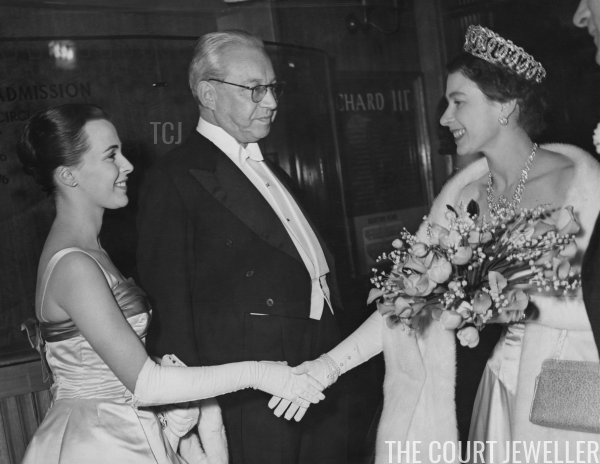 |
| Keystone/Hulton Archive/Getty Images |
When Queen Mary died in 1953, the tiara was inherited by her granddaughter, who had recently ascended to the throne as Queen Elizabeth II of the United Kingdom. Elizabeth has worn the tiara throughout her entire lengthy reign. Above, in December 1955, she wears the diadem to meet with Claire Bloom and Sir Alexander Korda after the premiere of Richard III in Leicester Square.
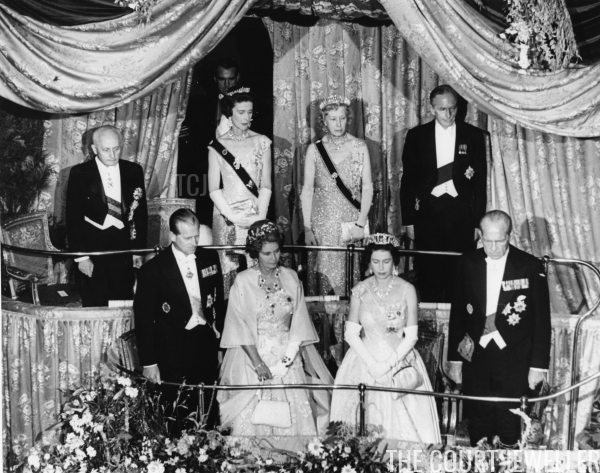 |
| Central Press/Hulton Archive/Getty Images |
In July 1963, she chose the tiara for a gala performance of A Midsummer Night’s Dream during the Greek state visit. (Fun fact: Princess Marina, standing in the second row, was the daughter of Princess Nicholas and the granddaughter of Grand Duchess Maria Pavlovna.)
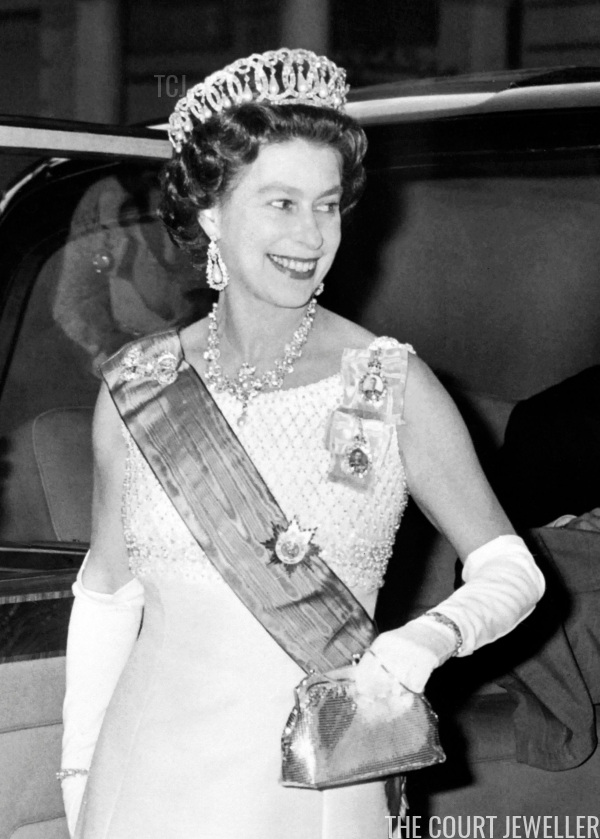 |
| AFP/Getty Images |
Here, in June 1972, the Queen paired the pearl setting of the tiara with the Gloucester Pendant Earrings, Queen Victoria’s Golden Jubilee Necklace, and the Dorset Bow Brooch.
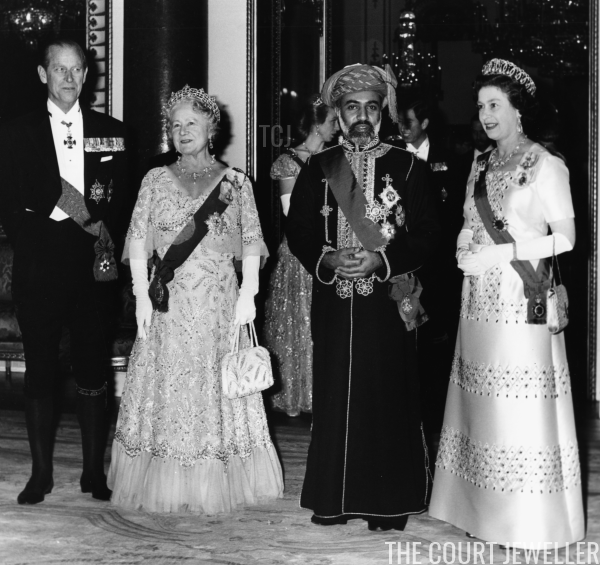 |
| Geoff Bruce/Central Press/Getty Images |
For a state banquet honoring the Sultan of Oman at Buckingham Palace in March 1982, the Queen wore the same tiara, earring, and necklace combination. Six years later, Garrard renovated the hundred-year-old tiara once more, building it a completely new frame.
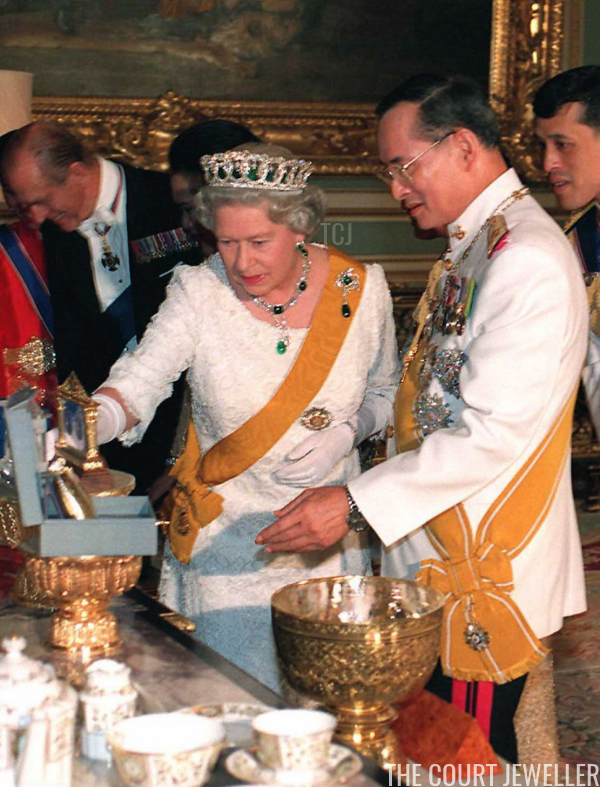 |
| VITOON/AFP/Getty Images |
The Queen chose the emerald setting of the tiara, plus jewels from the Delhi Durbar Parure, for her state visit to King Bhumibol Adulyadej of Thailand in October 1996.
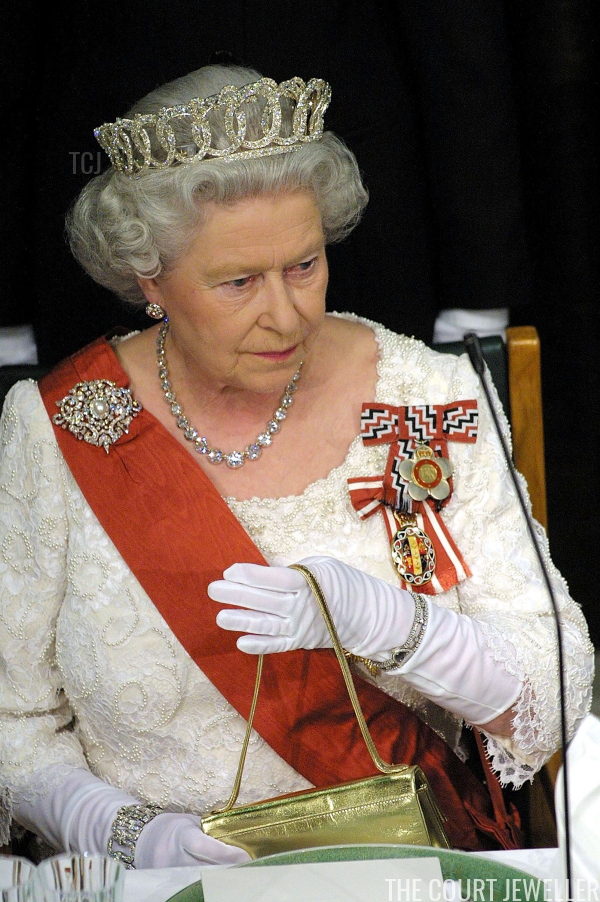 |
| Dean Treml/Getty Images |
For a state dinner in New Zealand in February 2002, the Queen wore the tiara “widowed” — that is, without either its pearl or emerald drops. She paired it with diamonds and Queen Mary’s Richmond Brooch.
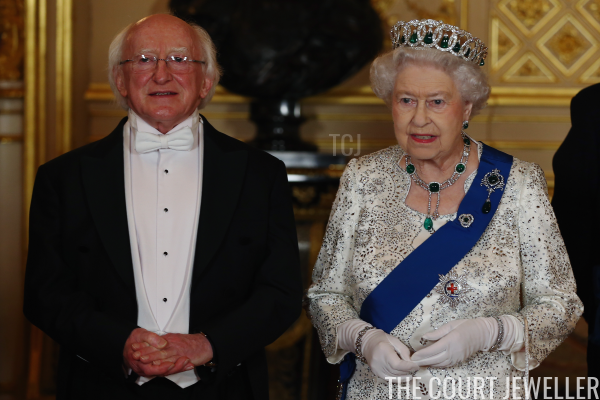 |
| Dan Kitwood/Getty Images |
And, for a landmark state visit from President Higgins of Ireland in April 2014, the Queen paid tribute to the emerald isle by wearing the emerald setting of the tiara. The tiara has survived more than a century of life, including the upheaval of revolution. It’s sort of wild to think that only three royal women have worn the tiara in public, isn’t it? But what a trio — Grand Duchess Vladimir, Queen Mary, Queen Elizabeth II. Not a bad roster!
